Handling RRs
After an RR is created, the recipient needs to handle it for analysis, planning, implementation, delivery, acceptance, and closure.
- Analyzing an RR
- Planning an RR
- Implementing an RR
- Delivering an RR
- Accepting an RR
- Closing an RR: Once accepted, an RR changes to the Closed state.
Analyzing an RR
The owner assesses the RR's value in the Analyzing phase, and then chooses to accept, turn back, or suspend the RR after analysis and decision-making.
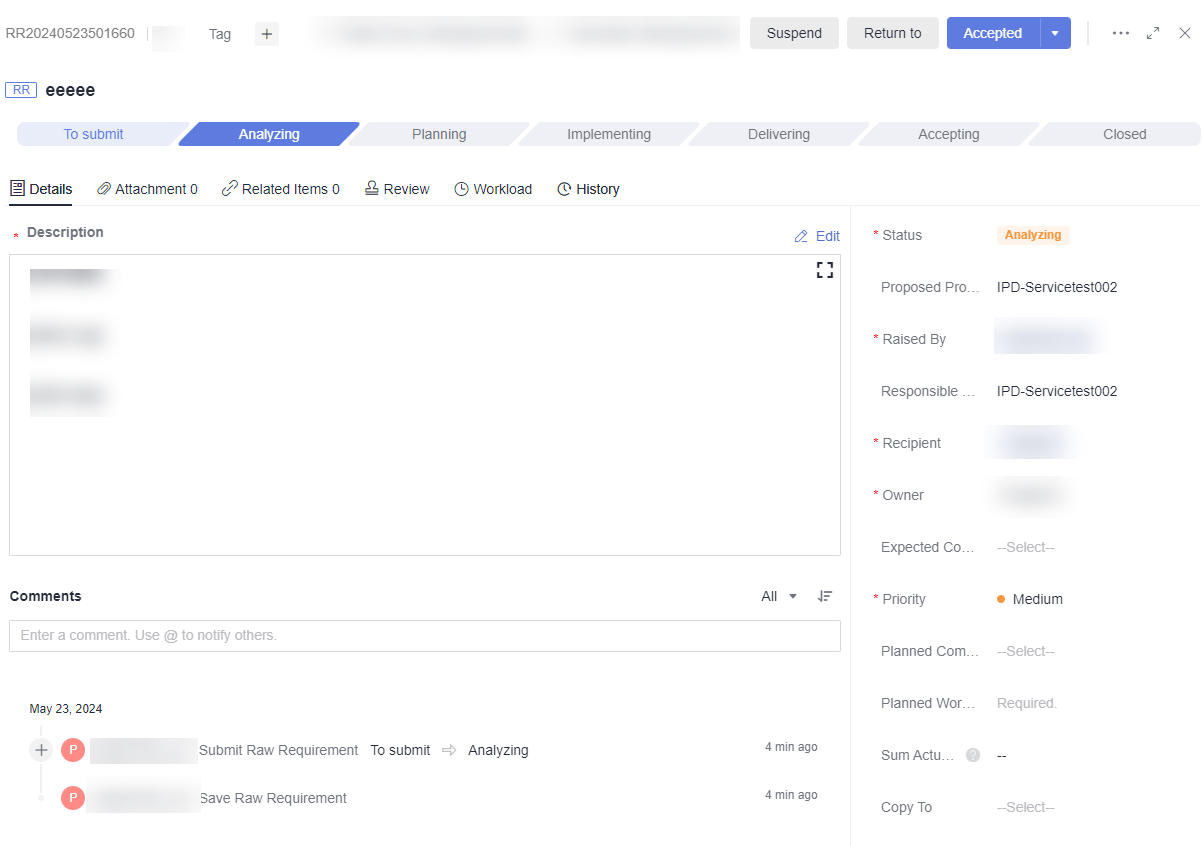
- If the owner accepts the requirement after analysis, they must fill in the mandatory fields and specify the subsequent work plan.
Figure 2 Accepting a requirement
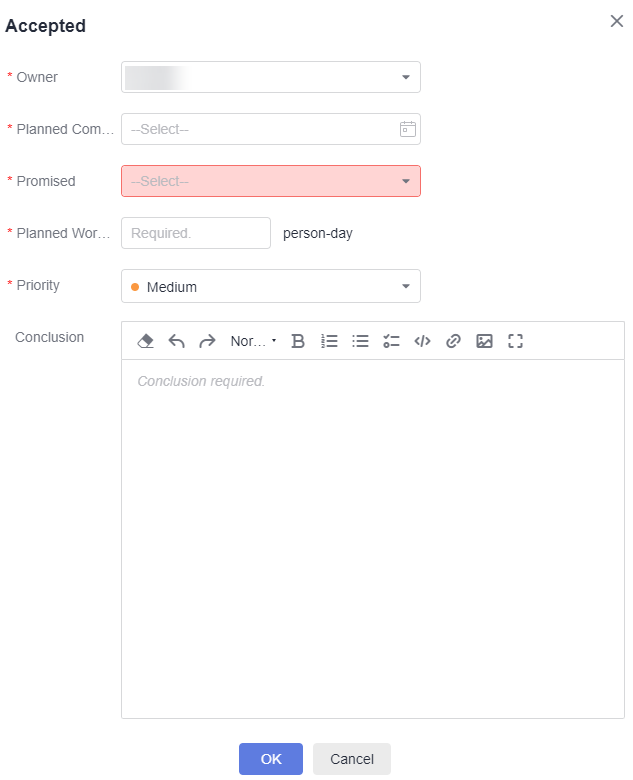
- If the owner turns back the requirement after analysis, they must also fill in the mandatory fields and reasons.
Figure 3 Turning back a requirement
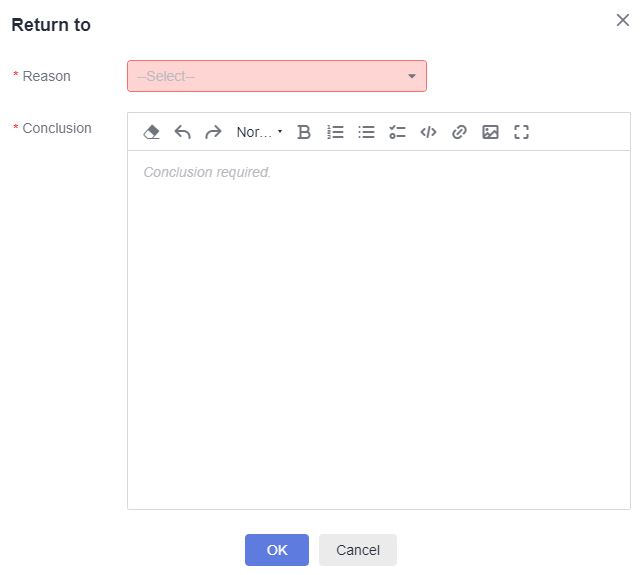
- If the requirement is considered not urgent after analysis and decision-making, you can suspend it and provide your reasons.
Figure 4 Suspending a requirement

Planning an RR
After an RR is analyzed and accepted, it moves into the planning phase. Determine whether to break down the RR, associate child requirements, or directly start the development.
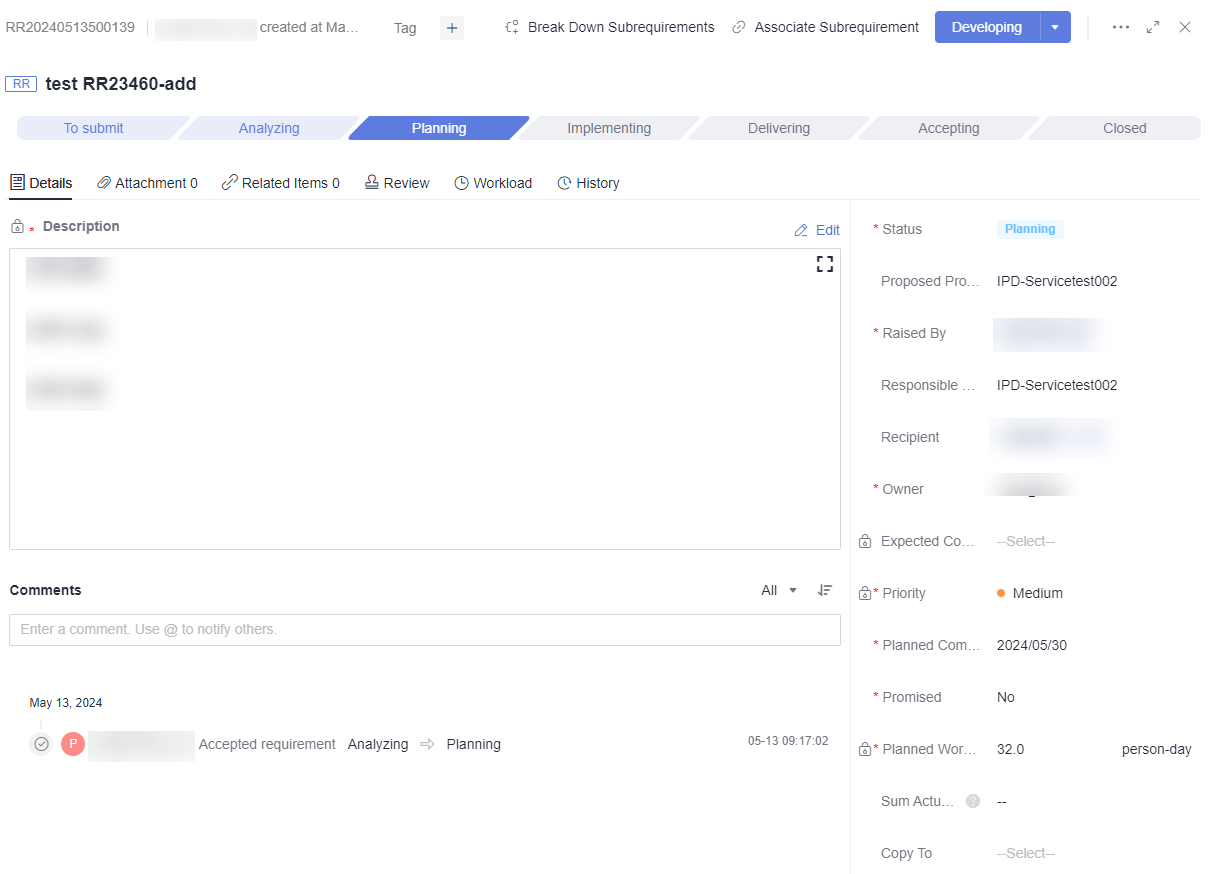
After the RR is broken down, it automatically transits to the Implementing state.
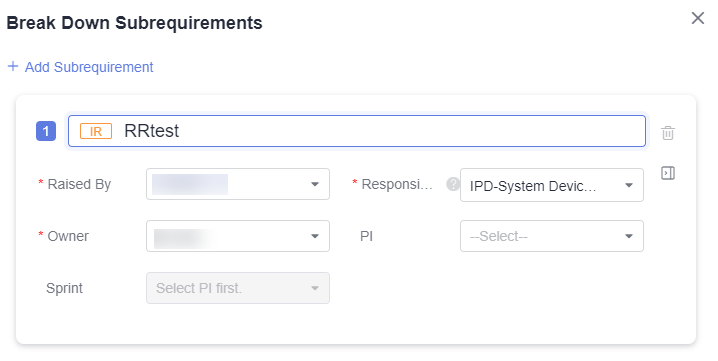
Implementing an RR
If needed, you can break down the RR or associate child requirements with it anytime during the R&D process.

When all created IRs and associated child requirements are completed, the RR automatically transits to the Delivering state.
Delivering an RR
The owner evaluates the delivery quality from various dimensions, and decides whether to directly submit the requirement for acceptance or turn it back to the corresponding phase for modification.

Accepting an RR
After the RR transits from the Delivering state to the Accepting state, the proposer evaluates whether the requirement can be accepted on the Other Projects tab. If the requirement is fully met, the proposer accepts it, and it then changes to the Closed state.

You can check all the child requirements created from the RR in the RR list for global tracing.

Feedback
Was this page helpful?
Provide feedbackThank you very much for your feedback. We will continue working to improve the documentation.See the reply and handling status in My Cloud VOC.
For any further questions, feel free to contact us through the chatbot.
Chatbot








